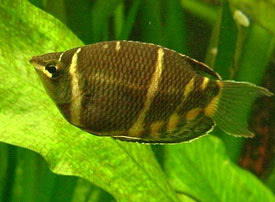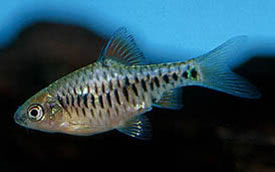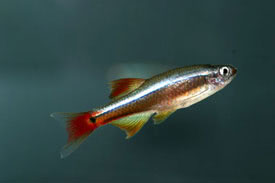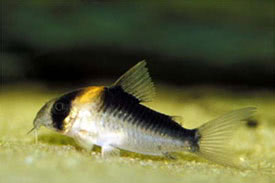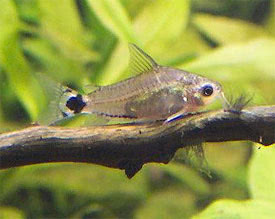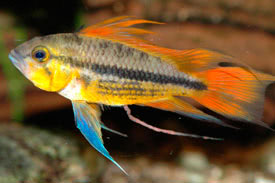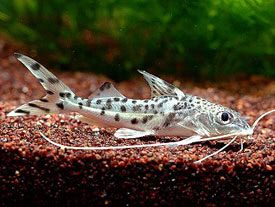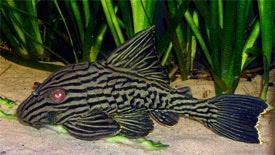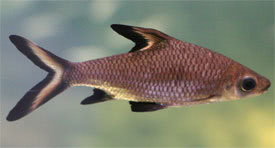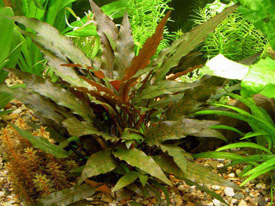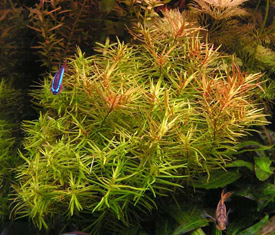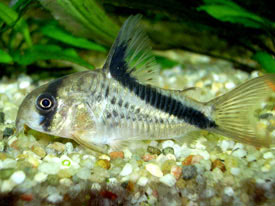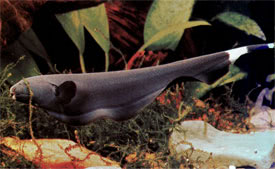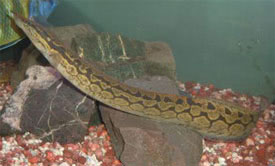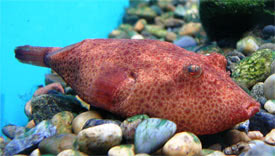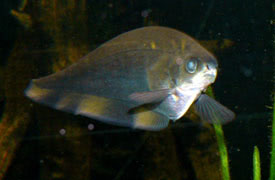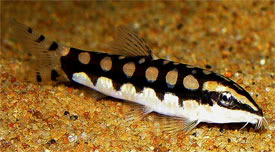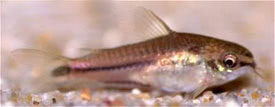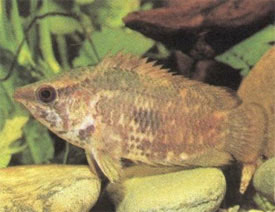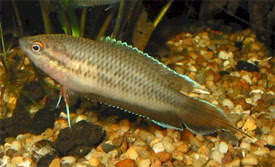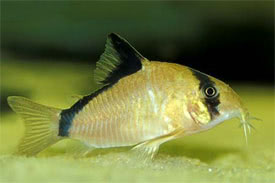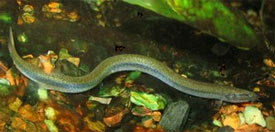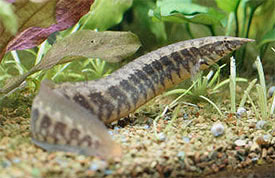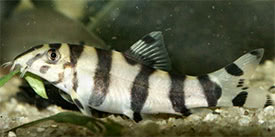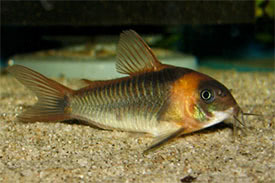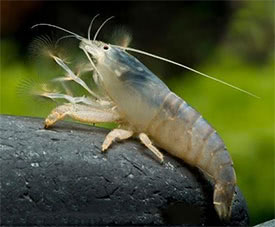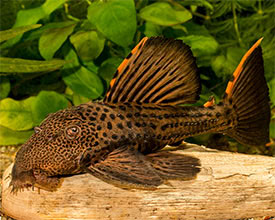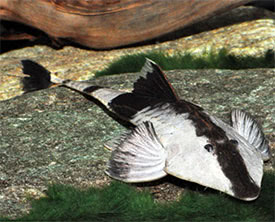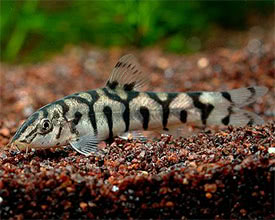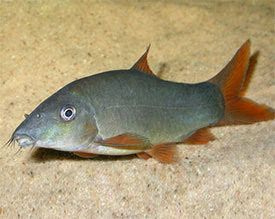
 Magyarul / Hungarian
Magyarul / Hungarian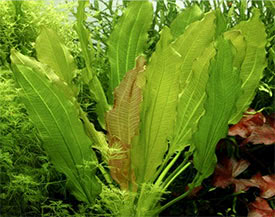


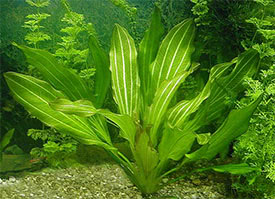
- Scientific name: Echinodorus osiris
- Synonym: Echinodorus osiris rubra, Echinodorus peruensis var. rubra, Echinodorus aureobrunata
- Common name: Melon Sword
- Family: Alismataceae
- Group: Aquarium plants
- Max height: 40-50 cm
- Distribution: South America; Southern Brazil
- Habitat: Found in flooded areas or along the banks of stagnant or slow-flowing waters.
- Substrate: Iron rich sand or gravel
- Placement in aquarium: Background, midground
- Planting density: 1 plant for 40 cm2
- Lighting needs: Bright
- Temperature: 22-28 °C
- pH: 6.5-7.8
- Hardness: 1-15 NK°
Description: In his revision of the Echinodorus genus, Karl Rataj has described this swordplant as Echinodorus osiris, other authorities consider this species as part of Echinodorus uruguayensis. Its red-brown leaves, which develop under intense lighting, give the solitary plant a specifically decorative appearance. Young, central leaves are reddish-brown, turning bright green as they mature. The clearly visible veins and ruffled leaf edges make this swordplant more interesting than some others. The species can be kept in soft and hard water without encountering problems. A substrate rich in nutrients will enhance strong growth, and iron deficiency can easily be detected as the leaves of the Melon Sword will turn pale and translucent. The plant can grow quite large, so it should not be planted in aquarium smaller than 75 litres. The Melon Sword is usually left alone by herbivorous and large fish. As with the majority of species in this genus, Echinodorus osiris is a marsh plant in nature, meaning that it can grow emersed and submersed. Aquatic leaves will be quite different from emersed leaves, in shape, size and texture. Newly-purchased plants have often been propagated emersed by nurseries and have oval reddish-brown leaves, while submersed leaves will be long and lanceolate.
Propagation is possible by rhizome division and by adventitious plantlets. The floral stalk (70-80 cm long) is at first erect, then becomes creeping with the flower bud groups of rooting leaves beginning to appear on it. Once the new plant establishes a root system, cut it at the root with very sharp scissors and replant the small plantlet. Submersed leaves are 20-30 cm long and 5-7 cm wide. In cooler waters the red coloring of leaves becomes more intense.







